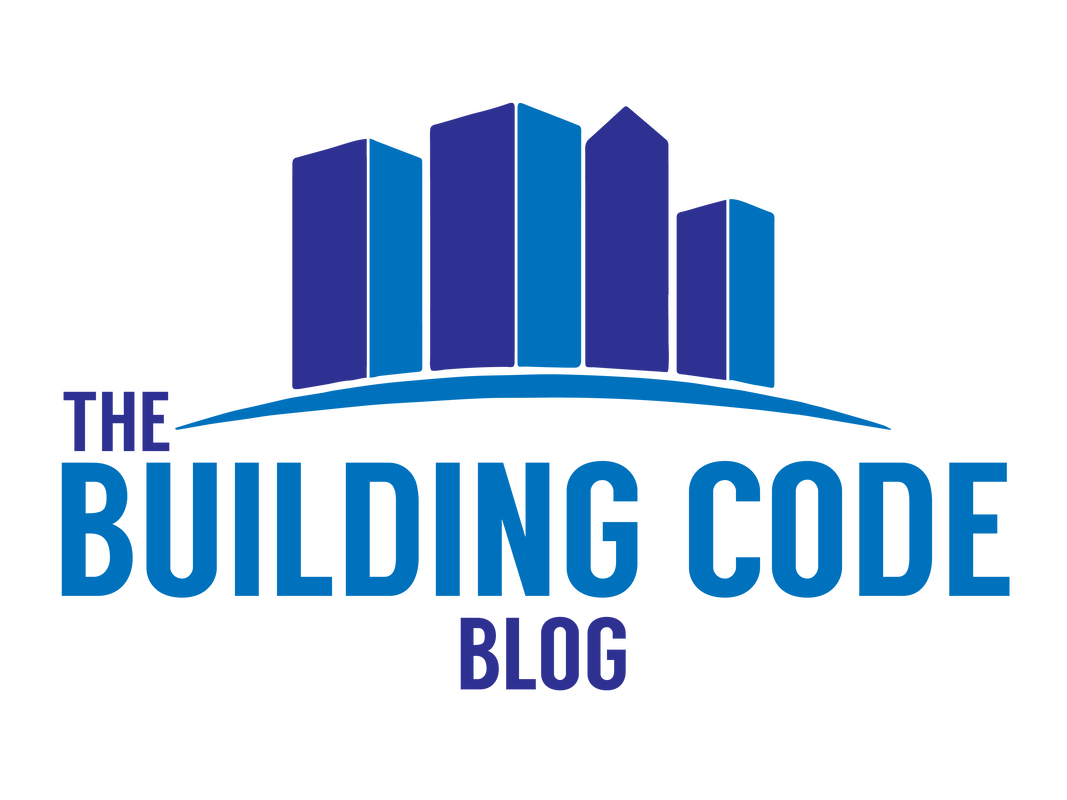|
NFPA 285 is the “Standard Fire Test Method for Evaluation of Fire Propagation Characteristics of Exterior Wall Assemblies Containing Combustible Components.” How’s that for a title? Despite the lengthy name, the goal of the test is quite simple – to understand how fire will spread on an exterior wall. In this article, we’ll briefly review the history of NFPA 285, discuss the criteria for the rest, and then review when compliance with NFPA 285 is required in the IBC.
NFPA 285 History
The NFPA 285 standard was first published in 1998 and is currently on it’s 4th edition, published in 2019. But the origins of NFPA 285 go all the way back to the 1970s, when foam plastic insulation became a popular choice for energy conservation in (or on) exterior walls. Based on work by the Society of Plastics Industry, the first test for flammability characteristics of an exterior wall was developed. This test was named UBC 17-6 and was first adopted by the Uniform Building Code (UBC) in 1988. This same test was later renamed as UBC 26-4 [1].
UBC 17-6/UBC 26-4 was a massive, full-scale test, consisting of a two-story exterior wall, totaling 24 feet in height (12 feet for each story). The test evaluated both vertical and lateral flame spread on nonload-bearing exterior walls containing foam plastics. Several wall assemblies containing foam plastics passed the test and, starting with the 1988 UBC, could be used as exterior wall assemblies in Type I, II, III and IV construction. A few years later, a modified test, using a smaller scale was adopted as UBC 26-9. 10 years after the first adoption UBC 26-4, NFPA released the first edition of NFPA 285, entitled “Standard Fire Test Method for Evaluation of Fire Propagation Characteristics of Exterior Non-Load-Bearing Wall Assemblies Containing Combustible Components.” This version of NFPA 285, published in 1998, is the same as the UBC 26-9 test. Notice the difference in the name between the 1998 version of NFPA 285 and the 2019 version. The “nonload-bearing” restriction has been removed, now allowing load-bearing walls to be tested (although the standard itself does not require the application of a live load during testing). NFPA 285 Test Criteria
The NFPA 285 testing criteria is nuanced, with variations based on the materials used in the wall assembly and the thickness of certain components in the wall assembly. For a full explanation of the acceptance criteria, review Section 10.2 of the 2019 edition of NFPA 285.
Generally, the acceptance criteria involves the following: Flame propagation on the exterior face of the wall assembly
Flame propagation through combustible components and insulation Depending on the materials used in the exterior wall assembly, there are various temperature requirements that must be met. These include:
These temperature requirements apply both vertically and laterally and are measured by thermocouples placed above and to the side of the first story window opening. Temperatures in the second story
Flame Propagation to second story
Flame propagation to adjacent horizontal spaces
When is NFPA 285 Compliance Required?
In the 2021 IBC, there are a number of triggers for NFPA 285 compliance. If you are using an earlier version of the code, the requirements are fairly similar, but refer to the corresponding sections in the applicable code edition for the specific details.
Water Resistive Barriers (IBC 1402.5) Exterior walls in buildings of Type I, II, III or IV construction that are greater than 40 feet above grade plane must comply with NFPA 285 if they contain a water-resistive barrier. There are two key exceptions:
For this section, fenestration products, flashing of fenestration and water-resistive-barrier flashing are not considered to be part of the weather-resistive-barrier. If any of these materials are combustible, the exceptions above do not apply. Metal Composite Materials (MCMs) (IBC 1406.10.3) Exterior walls containing MCMs in buildings of Type I, II, III or IV construction that are greater than 40 feet above grade plane must comply with NFPA 285. Note that the 2021 IBC has removed several exceptions that existed in previous editions regarding the height of the MCM panels and the area of wall covered by the panels. High-Pressure Laminates (HPLs) (IBC 1408.10.4) Exterior walls containing HPLs in buildings of Type I, II, III or IV construction must comply with NFPA 285. There are two key exception for when HPLs are installed 40 feet or less above grade plane:
Mechanical Equipment Screens (IBC 1511.6.2) Compliance with NFPA 285 is one of three possible code paths for providing combustible mechanical equipment screens on the roof decks of buildings of Type I, II, III or IV construction. Foam Plastic Insulation (IBC 2603.5.5) Exterior walls containing foam plastic insulation in buildings of Type I, II, III or IV construction of any height must comply with NFPA 285. There are several exceptions:
Fireblocking (IBC 718.2.6, Exception 3) Fireblocking is not required in exterior walls when the exterior wall covering complies with NFPA 285. NFPA 285 Compliance Cheatsheet
Want an easy-to-read flowchart showing when NFPA 285 compliance is required?
Key Items to Know
Wall Assembly vs. Wall Components
NFPA 285 tests wall assemblies as a whole. Individual components of the wall are not considered, rather the entire exterior wall assembly is evaluated for compliance with the standard. Deviation from NFPA 285 Assemblies The use of Engineering Judgements (Ejs) for NFPA 285 compliance is a well-debated topic in the design industry. On one hand, it can be impractical to test an exterior wall assembly with every possible variation of material and component (remember that NFPA 285 is a full-scale test of a specific wall assembly). But on the other hand, it can be difficult to judge how variation from a tested assembly will impact performance. While there are many exterior wall assemblies that have passed the NFPA 285 test, in my experience, many designers choose an assembly that has not been specifically tested. Many manufacturers of exterior wall products will obtain a testing report from ICC Engineering Services (an ICC ES Report, or something similar from another testing agency) that claims the product would pass NFPA 285 if tested. These reports, which essentially amount to a generalized EJ, are typically based on substituting one or more products into a wall assembly that has passed NFPA 285. If the EJ route is chosen, the EJ should be provided by a qualified design professional, such as a licensed fire protection engineer with experience in the evaluation of exterior wall assemblies. NFPA 285 vs. ASTM E119 NFPA 285 is different from ASTM E119, the test most commonly used to establish fire-resistance ratings for wall assemblies. This means that if your exterior wall is required to have a fire resistance rating, it also needs to have been tested per ASTM E119. Unfortunately, there are many walls that have a fire-resistance rating per ASTM E119 but do not pass NFPA 285. Similarly, there are walls that comply with NFPA 285 but may not be tested to ASTM E119. This means that if your exterior wall is required to have a fire resistance rating and comply with NFPA 285, there are at least four potential code paths available:
Note that the acceptance of the last two items will vary by jurisdiction. In my experience, most AHJs are satisfied by an ICC ESR report, but the acceptance of EJs can vary greatly. See the section below for more on Ejs. Finding NFPA 285 Wall Assemblies To my knowledge, the best place to find wall assemblies that have been tested to NFPA 285 is the UL database. You can search “FWFO” in the UL directory to find the list. As mentioned earlier, many designers use the Engineering Judgement route to demonstrate NFPA 285 compliance. Wall assemblies using this code path are not listed in the above UL database. Changes to the 2019 Edition The 2019 edition has been updated with a new title, now allowing for load-bearing walls, but has also been updated with a few key technical changes. A few notable changes:
It’s crucial to note that the 2019 testing requirements are in many ways more rigorous than past editions. Wall assemblies that have passed earlier editions of NFPA 285 may not comply with the 2019 edition. Need assistance on your specific project? Add Campbell Code Consulting to your team. They are a full-service code consulting and fire protection engineering firm that can help you navigate complex code challenges.
7 Comments
1/28/2022 03:41:28 am
Reply
10/13/2022 01:51:36 am
Great article! I had a good time browsing your website. I don't leave very often remarks, but you deservingly get a thumbs-up! Thank you for sharing your knowledge. Keep it up.
Reply
4/3/2023 02:42:35 pm
Excellent article with info otherwise hard to find if not impossible. Is the best source of complying wall assemblies UL?
Reply
3/11/2024 04:34:42 pm
We have a building where spray foam is being proposed as an insulation methodology for the PEMB walls and roof. This is a shops for working on the County fleet vehicles. The question has arisen about intumescent paint over the spray foam. This is not a habitable building in the sense that no-one resides over night and there are no sleeping quaters. We have the building listed as S-1 Occupancy by the Florida Building Code and II-b construction type.
Reply
Leave a Reply. |
Categories
All
Sign up to receive Building Code Blog UpdatesArchives
July 2024
|
The Building Code Blog
- Home
- Blog
- About
-
Tools
- Allowable Height & Area Calculator - Non-Separated Mixed Occupancy
- Allowable Height & Area Calculator - Separated Mixed Occupancy
- Average Grade Plane Calculator
- Calculated Fire Resistance for Wood Walls
- Fire and Smoke Damper Tool
- Fire Wall/Exterior Wall Intersection Tool
- Frontage Calculator
- IBC Occupant Load Calculator
- Plumbing Fixture Calculator
- Stair Pressurization Estimator
HomeAboutBlogContact |
Copyright © 2019-2024 The Building Code Blog
The views, opinions, and information found on this site represent solely the author and do not represent the opinions of any other party, including the author's employer and the International Code Council, nor does the presented material assume responsibility for its use. Local codes and amendments may vary from the code requirements described herein. Fire protection and life safety systems constitute a critical component of public health, safety and welfare and you should consult with a licensed professional for proper design and code compliance.
|


 RSS Feed
RSS Feed
